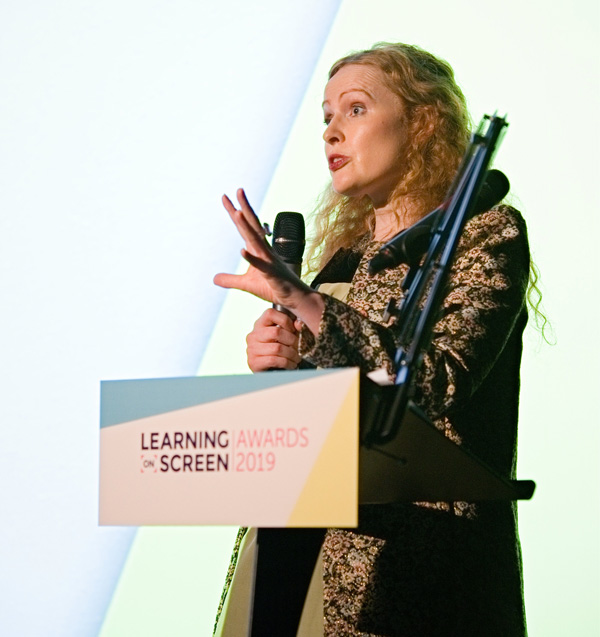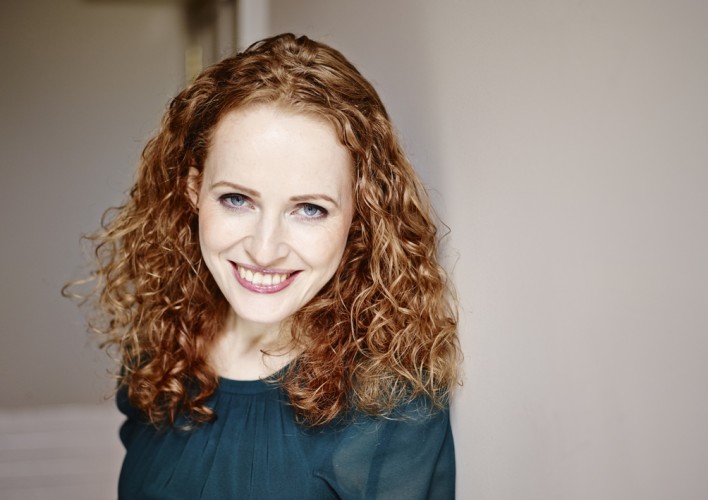Kate Williams' Learning on Screen Awards speech 2019

Kate Williams speaking at the Learning on Screen Awards 2019
It is an incredible privilege to be here tonight at the Curzon Soho to witness all these amazing filmmakers and young filmmakers who have inspired me with their creativity, their passion and their desire to tell a brilliant story. In this difficult, divided and fearful time, our culture and society needs storytellers more than ever and we need you in our teaching and learning. We need people who uncover the reality behind the hype or spin and have the faith that their words can change the world. In education, film can change hearts and minds and bring us to the truth. It is a vital tool for learning and encouraging us to see outside of the confines of the world we have. Film and television can be our ways of going back in time, of throwing ourselves back into the past and living it, with all its sounds and smells, what is strange and what is familiar. I have a particular interest in the power of television when it comes to history and past – as well as news and current affairs. But I have also seen its power for science, the arts and all forms of communication. I know what it can do. And it is wonderful to see the amazing work of the Learning on Screen charity and everything they do for film, tv and radio and learning and teaching.
I have been broadcasting for nearly ten years now and I love talking about the stories behind facts and laws – whether the events of the Darien Scheme leading up to the Act of Union or the sugar poisoning scandal in Victorian Bradford that contributed to the abolition of the sugar tax.
Television has always had the power to thrill. I think of how delighted people were with television in its early days. In the US, in 1949, there were 1 million TVS and then by 1954, there were 32 million. Britain too saw a huge rise in the 1950s, with a spike around the televising of the Coronation of Elizabeth II in 1953 – to over 2 million TVs in the country. There was much debate about televising the Coronation, and politicians and courtiers were reluctant. But the clamour was too great and the public interest too high – indeed there were protests that the upper classes could watch but not the ordinary people, in what seemed to so many a throwback to the pre war class system - and the decision was made to televise – although the moment when the young Queen was anointed with the anointing oil, symbolising her anointing by God wasn't shown. There was then huge pressure to get transmission into the more far flung parts of the UK – so that everybody could be included. Over 20 million people watched part of the Coronation, which meant that each set had on average of 7 and a half people gathered around (special magnifying glasses were made to be stuck on the screen). People even dressed up as TVs for the coronation parties that day.
It was the beginning of a marriage between the royals and TV, as the court saw in television a chance to broadcast the message they wished. The young Prince Charles was put in front of the world’s TV cameras for his investiture as Prince of Wales. But in the same year, 1969, the documentary The Royal Family was broadcast – and it was deemed to have gone too far. It is buried deep in the archives now, only a few extracts have been made available. Once an institution lets the TV cameras in, it is very hard to get them out again.
What struck me about all the entrants was the excellence of their story telling and how they created story and narrative out of so many varied subjects. For storytelling is vital to what we do, most of all when it’s true. We learn how to understand stories and the relationship between teller and listener even before we can speak.
I’m fascinated by the story of the Heider-Simmel experiment. In 1944, two scientists, Mary Ann Simmel and Fritz Heider showed a group of students a short film of two triangles (one large and one small) and a circle moving across a surface, with a rectangle nearby. The students were asked to suggest what was happening. Only one talked of shapes moving over a surface. Everybody else came up with stories about what they saw – very often the students thought that the triangles were two men in conflict and the circle was a woman trying to escape. They accorded these spare, sparse, simple space with colour, with emotional lives and complex thinking. The smaller triangle was valiantly defending the aggressive triangle against the circle. People saw monumental anger in the larger triangle. The participants attributed motivation, needs, ambitions – even though the usual cues by which we see such things – such as words or facial expressions (or even a face) were absent. The Heider Simmel experiment has been repeated and nearly every time, people tell stories about what they see.
As humans, we don’t just want to see a scene. We want it explained to us, humanised – we want to find out the story. We want to understand about the individuals. We want to know why and how what we see is happening. When we meet someone, we ask about their story – what do you do, where do you live, are you married? We want to find out people’s back story, to a degree, their past. As we know, when we see a human on screen, whether in a documentary or a drama, we want to know about them – how old, where do they live – and what do they want?
When you think of our great stories, in film, book and play form, they are about showing characters who want something – and the story of whether they achieve their desires or not. And this is the basis of documentary too – does a movement such as the Chartists succeed, who will win the war, will the Stuart kings succeed in keeping the throne?
So, all of us, as filmmakers, as broadcasters and as those working on screen – we are all storytellers. It’s our responsibility to tell new stories, explore what hasn’t been told – let hidden voices speak.
The power of TV and film is an incredible thing. It is such an honour to see you amazing entrants and winners at the top of your game with creative, passionate and investigative films. Yours are films that can make change, throw new light on the world – and make the world we have better.
Kate Williams
